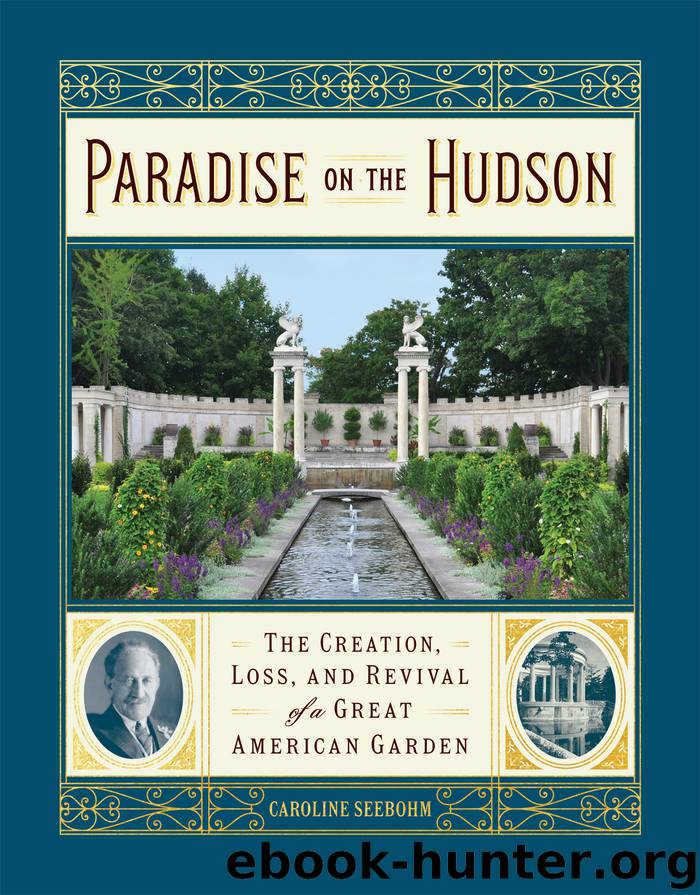Paradise on the Hudson by Caroline Seebohm

Author:Caroline Seebohm
Language: eng
Format: epub
Publisher: Timber Press
Published: 2020-04-15T00:00:00+00:00
The Last Partnership
George H. Chisholm was a Welshman who learned his horticulture at the University of Wales. One of his early assignments from the British government was to study plant disease among lilies in Bermuda. After moving to the United States in the late 1920s, he attracted clients such as William Rockefeller, Andrew Carnegie, and Nicholas Brady. But perhaps his most significant client from a career standpoint was the Duchess of Talleyrand, the former heiress Anna Gould, who had a famous collection of orchids growing in greenhouses at her Tarrytown, New York, estate. Orchids! Untermyer saw at once that he must have Chisholm for himself.
Their first encounter had not been promising. According to Geoffrey Hellman in the New Yorker, Chisholm first met Untermyer in 1928 in order to sell him a rock garden. Untermyer pretended to be outraged. “Have you seen my rock garden?” he asked. “It’s a geological monstrosity,” Chisholm responded. This was just the kind of riposte Untermyer enjoyed, and two years later he hired Chisholm and purchased his rock garden. The two became contentious and happy garden partners until the end of Untermyer’s life.
Unlike Waite, who was always frustrated by Untermyer’s stubbornness over bills, Chisholm seemed to quickly ferret out his employer’s weakness, persuading Untermyer that money should be no object if he wanted the biggest camellia in the world, or for a rare 10-foot-high fern to win first prize in the next flower show. How could Untermyer resist such a challenge? He found it impossible to say no to Chisholm—even when Chisholm went so far as to experiment with inoculating honeydew melon vines with cognac, port, and Benedictine liqueurs. The spiked-fruit experiment went nowhere, but delighted Untermyer with its creativity and publicity value.
Another Chisholm contribution was the living sundial, a 36-foot, circular flower bed with the numbered hours planted in different colored plants. It was opened to the public in May 1937. Chisholm declared that with careful study, one could tell the correct time within five or six minutes. He also enjoyed surprising his master with horticultural novelties, such as creating umbrellas, fans, swans, and canoes out of flowers. In one case, he produced a life-sized boat made of yellow cascade chrysanthemums. The boat “floated” in a pond of mountain laurel. A life-size Native American was in the boat, wielding a paddle; both the figure and the oar were also made of chrysanthemums.
Download
This site does not store any files on its server. We only index and link to content provided by other sites. Please contact the content providers to delete copyright contents if any and email us, we'll remove relevant links or contents immediately.
Turbulence by E. J. Noyes(7033)
The Thirst by Nesbo Jo(5779)
Gerald's Game by Stephen King(3913)
Be in a Treehouse by Pete Nelson(3207)
Marijuana Grower's Handbook by Ed Rosenthal(3114)
The Sprouting Book by Ann Wigmore(3050)
The Red Files by Lee Winter(2909)
The Remains of the Day by Kazuo Ishiguro(2614)
Sharp Objects: A Novel by Gillian Flynn(2440)
Christian (The Protectors Book 1) by L. Ann Marie(2393)
Organic Mushroom Farming and Mycoremediation by Tradd Cotter(2304)
The Culinary Herbal by Susan Belsinger(2057)
Stone Building by Kevin Gardner(1993)
The Starter Garden Handbook by Alice Mary Alvrez(1922)
Lilac Girls by Martha Hall Kelly(1868)
The Unlikely Pilgrimage of Harold Fry by Rachel Joyce(1834)
The Lean Farm Guide to Growing Vegetables: More In-Depth Lean Techniques for Efficient Organic Production by Ben Hartman(1782)
Urban Farming by Thomas Fox(1748)
Backyard Woodland by Josh VanBrakle(1586)
